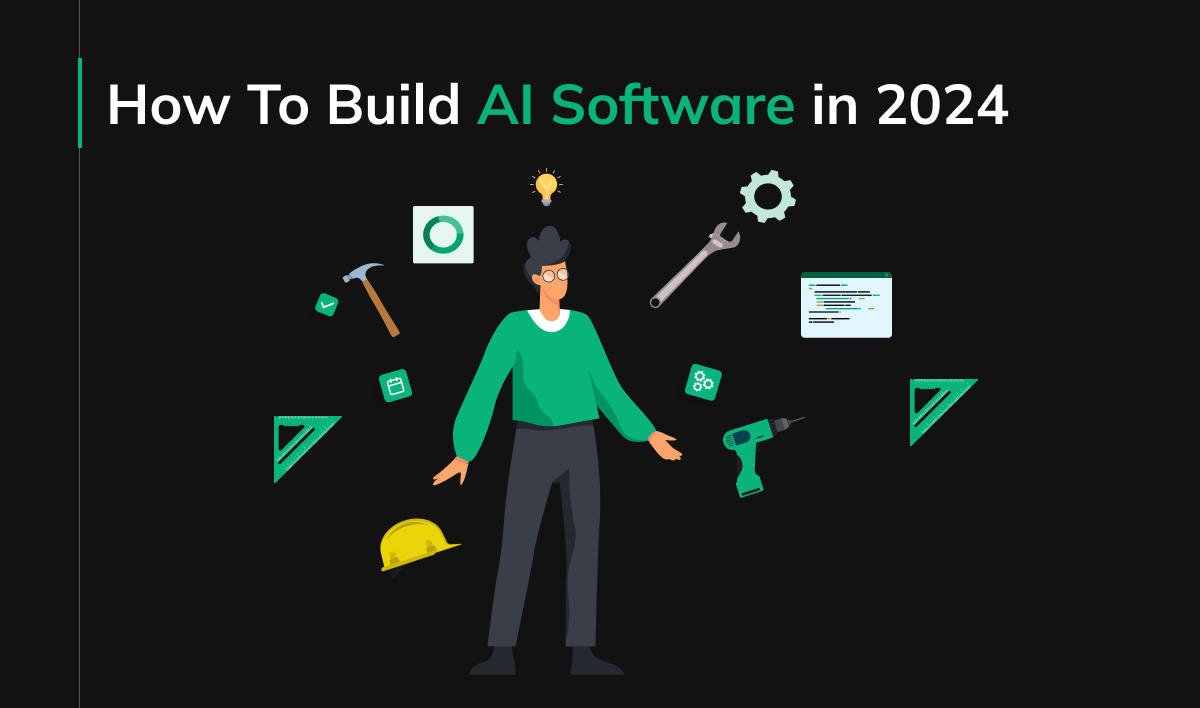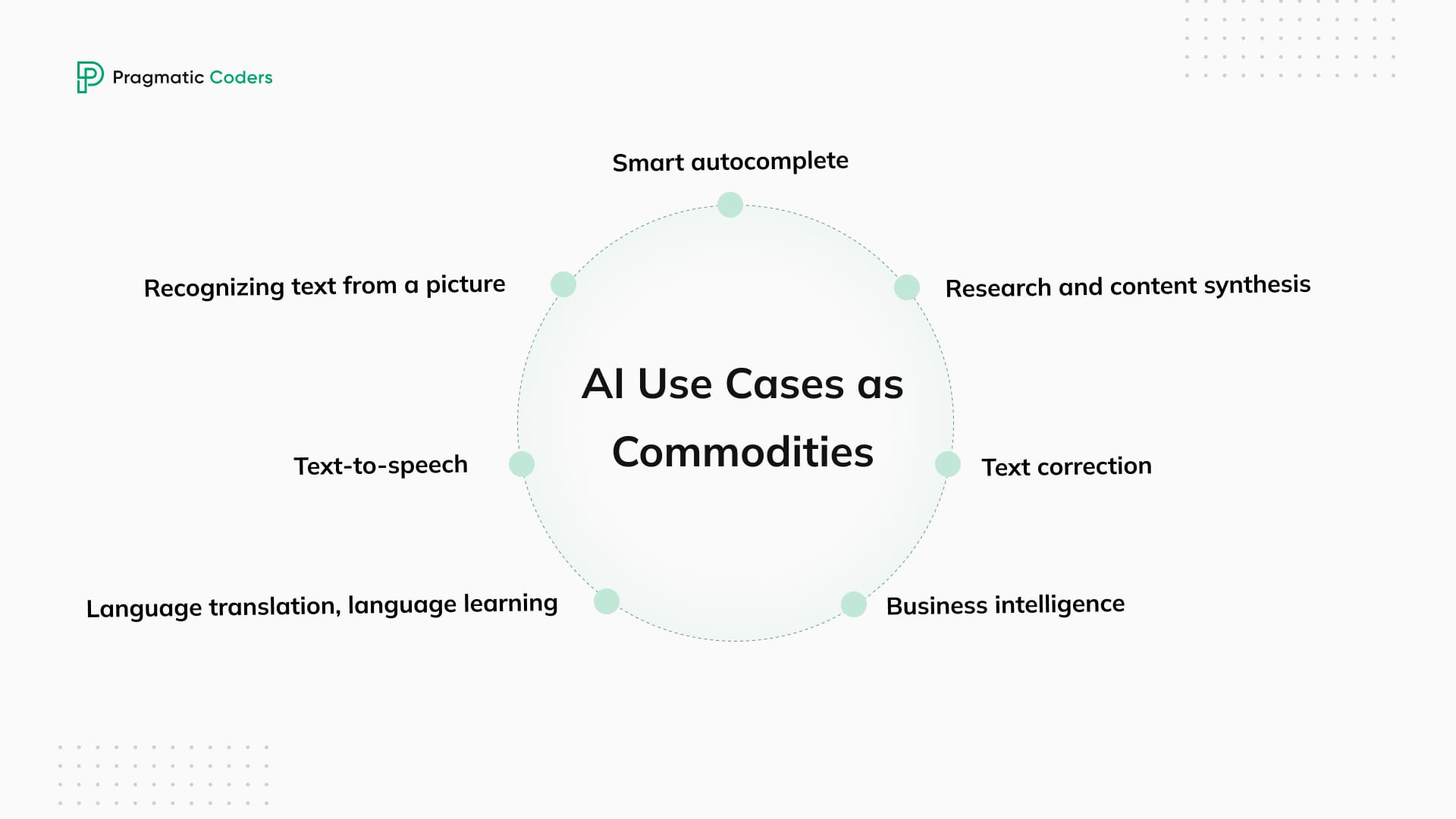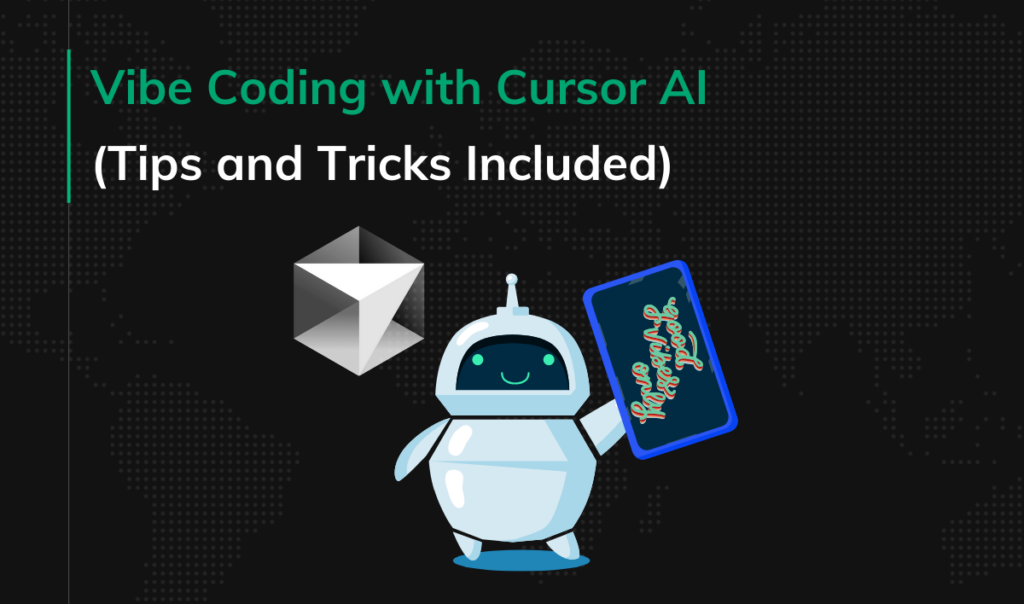How To Build AI Software in 2025

Welcome to Industry Insights, where our software experts share deep industry wisdom.
Artificial Intelligence (AI) is the hottest topic in the IT industry now, beloved by big tech, the largest corporations, and investors. If someone isn’t involved with AI, they’re out of the game. While the term ‘AI Bubble’ isn’t openly used yet, probably everyone on the street has heard that AI will take our jobs (it probably won’t, but AI-based tools are already making it easier). As much as these predictions are true to some extent, and we’re likely witnessing a revolution, we’re still here and need to answer the question: how can we tame the power of AI? The business world abhors a vacuum, and as business owners or aspiring founders, we should consider how AI fits into our puzzle and impacts our work.
Key Points
|
The Reality of AI Software Development
Soon, AI and Machine Learning solutions will stop impressing people as standalone products. Instead, they will be seen as basic and obvious functionalities within digital services.
Currently, the market is oversaturated with different types of AI products, but we lack use cases, especially for generative AI. That’s why we should focus on them. Don’t just aim to create AI software; aim to find a great use case for it.
Many use cases we can think of in the context of making an AI are slowly becoming commodities, such as:
- Recognizing text from a picture
- Text-to-speech
- Language translation, language learning (farewell Duolingo)
- Business intelligence (simply speaking)
- Text correction
- Research and content synthesis
- Smart autocomplete
As a founder, you likely have a vision for using AI in your business. However, your main goal should always be to create a product that addresses a real problem rather than just attracting investors. With this in mind, I’ll show you how to create an AI-based product. Remember, all the usual rules for building a startup still apply. Also, when considering AI implementation, one of the most effective approaches is to develop custom AI agents. These specialized AI solutions can be tailored to your specific business needs and workflows.
How to Approach Building AI Software?
Firstly, Pinpoint Use Cases of AI In Your Product
Answer these three questions about AI implementation in your app honestly:
- Is it intended to be the product itself (think of cases like OpenAI or Anthropic)?
If the answer is “yes,” do a thorough competitor analysis. Chances are, your idea already falls into the “commodity” category and won’t sell as a standalone solution. Or it will cost a fortune to develop (Microsoft funneled $10 billion to OpenAI in 2023 alone).
Unless you have access to huge funding and unique, valuable data specific to your business domain, you should leave building solutions where AI itself is the product to the big players. NVIDIA stock prices are not a coincidence, let’s just say.
- Is it meant to be a fun gimmick, like smart autocomplete in an email client, or “what to read next” recommendations in an e-bookstore?
I encourage you to critically look at your idea to discern if it doesn’t fall into the “gimmick” category. Your main goal should always be to build a great product. Gimmicky AI features won’t make a huge difference if the core idea is flawed. After all, a bad email client won’t beat Gmail, even with the help of magical AI, will it?
- Does it solve a specific business problem (e.g., calculating the amount of fertilizer needed in farming depending on various factors)?
You have the problem, and you have the assumed solution. Or do you? If you only want to gather the data and “you’ll find out once you get there” — beware, it’s a trap. Know your scenarios; Are the problems you want to solve the same ones your target user base has? If not, going back to the drawing board will likely save you a ton of money. Our AI market research tool is a great way to start market research for free, helping you pinpoint real issues before diving into solutions.
Secondly, Gauge Your Ability to Build an AI System
Assess your competencies in the AI field:
- Are you a data scientist or data engineer yourself?
AI expertise can help tremendously but may also give a false sense of advantage. Even if you’re familiar with the AI development process, consider what you may not yet know about building software solutions themselves.
- Are you aware and knowledgeable about the tools used to develop AI solutions?
Again, without knowing the tools, you need someone who is familiar with them. On the other hand, your familiar toolset might not be perfect for the specific use case. For example, being an LLM expert won’t be of much help when developing computer vision solutions.
- What’s your budget?
This might be a very limiting factor in terms of what is possible to achieve. On the flip side, it can help in optimizing your AI software development project to prioritize the most important things (you should hire a solid Product Manager, by the way).
- Is your business already generating revenue?
In AI research and development, budget underestimation is very likely, especially when you’re not doing it in logical order—data first, model later. Having a stable income as you move forward in development would make it much more seamless.
- What’s your experience in developing digital products?
As you may guess, it’s a double-edged sword. Obviously, it seems like another item that sets you ahead among others, but for instance, adopting a process from a huge company without being aware of the differences between you and them may become a huge detriment to the entire undertaking.
If you and your idea both survived this evaluation, we can think about what to do next.
What’s Required To Build AI Software?
Here we have two possible directions to take: either develop AI software from scratch or integrate the existing AI platforms and products. Developing your own model is tempting, especially since proprietary technology is highly regarded by investors. On the other hand, coming back to what we’ve stated previously, you want to solve a specific business problem. To choose the optimal direction, it’s worth considering the hard-to-meet requirements you might face:
- The AI software market evolves dynamically, with huge amounts of funds currently invested in creating AI technologies. Potentially, something that you’ve spent a year working on could be replaced overnight by one announcement from a big player. You need to take into account that developing your own AI from scratch takes significantly more time than traditional AI-based software development, which is understandable since it’s R&D and not just D.
- In reference to the above, time is money. And money is needed to pay the people who specialize in AI projects, who at the moment are not complaining about job opportunities (to say the least), and the risk of being outbid by your competitors is significant. Especially if you’re still in the early phase and do not have something that’s already proven to work on the market. An employee leaving your company at this stage will cost you double.
- People and competencies: Data science professionals are fantastic in the theoretical aspects of their work, and they tend to specialize in narrow tooling specific to their field. However, they can lack knowledge and experience in the tooling and infrastructure needed to develop a model. That means you need to add more people with highly demanded skill sets. Data science work requires peace and time, and in a startup environment, one needs to adopt a special kind of mindset (speeeeeed!), which may not necessarily play well together.
- The most important thing: data. If you don’t have data sources for training your models before you start development, it’s extremely easy to miss your cost estimates. From my personal experience with three different products, such a process setup is a huge money vacuum. Speaking for myself, I don’t see a way this could succeed.
- Granted you have a data source, maybe even a data lake, what will you do next? If you pause here without an immediate answer, that’s another indication that it might not be the right moment to jump into developing your own AI model.
If you don’t have answers to address the mentioned issues, you should definitely look into pre-existing solutions. That means you shouldn’t build your own AI model in the early stage of your business. In the beginning, your priority should be to address the problem. It’s very likely that building your own solution in-house is only a less efficient way to address it.
How To Start Your AI Development?
Conduct Thorough Research on Existing AI Solutions
First of all, you should do your own research about existing AI solutions on the market. I recommend starting with the largest cloud vendors: AWS, Microsoft Azure, and Google Cloud. Each of them offers services aimed at people like you. Next, you should look into what other companies have to offer; OpenAI and Anthropic come to mind. You can also research open-source models that will give you more control over your infrastructure.
Choose The Right Tools and The Right People
When it comes to tools, the higher the abstraction level, the better. If you’re not already an expert in a specific tool, you don’t want to become one as you grow your business. Being a founder promotes the jack-of-all-trades route.
In connection to that, you need people to work with. As mentioned earlier, people specializing in very specific technologies may not be the best fit for you at the moment. I recommend looking for generalists—people who are aware of what the market has to offer and are able to set up and run end-to-end solutions efficiently. The time for hiring specialists will come later, once you know your exact needs. In this case, I’d look for data engineers or even skilled software developers with experience in AI implementations, not data scientists. In my opinion, even an average web developer should be able to make use of services provided by major cloud vendors.
Focus on Data Acquisition and Management
Next, data: working on data acquisition is crucial, as is developing data pipelines—which is actually a data engineering task. You need a robust and reliable data infrastructure that ensures a continuous flow of high-quality data into your system. This involves not just collecting data, but also cleaning, processing, and storing it in a way that makes it easily accessible for training and refining your AI models. Having an amazing AI model without data is like having a supercar without a driving license. What’s the point? The quality and relevance of your data directly affect the performance of your AI, making this a critical part of your development process.
Design a Scalable AI System Architecture
With your data acquisition strategy in place, the next step is to design the architecture of your AI system. This involves outlining how data will flow through your system, how models will be trained and deployed, and how users will interact with your AI app. Remember, simplicity is key. You need to build a scalable and maintainable system, prioritizing functionality over complexity.
Monitor and Refine Your AI System Continuously
Lastly, continuously monitor and refine your AI system. Creating an AI algorithm is not a one-time effort but an ongoing process of learning and improvement. Use feedback from users to make adjustments, and stay updated with the latest advancements in the AI market to keep your product relevant and competitive.
Conclusion
To wrap things up, building AI software in 2024 demands a strategic blend of innovation and realism. The AI field is rapidly evolving, and the key to success lies in clear use cases, robust data management, and practical implementation. Whether you’re utilizing existing AI tools or developing your own, focus on delivering real value to your users. Stay flexible, embrace continuous learning, keep refining your approach. And if you’re looking for an AI software development company, don’t hesitate to contact us!





